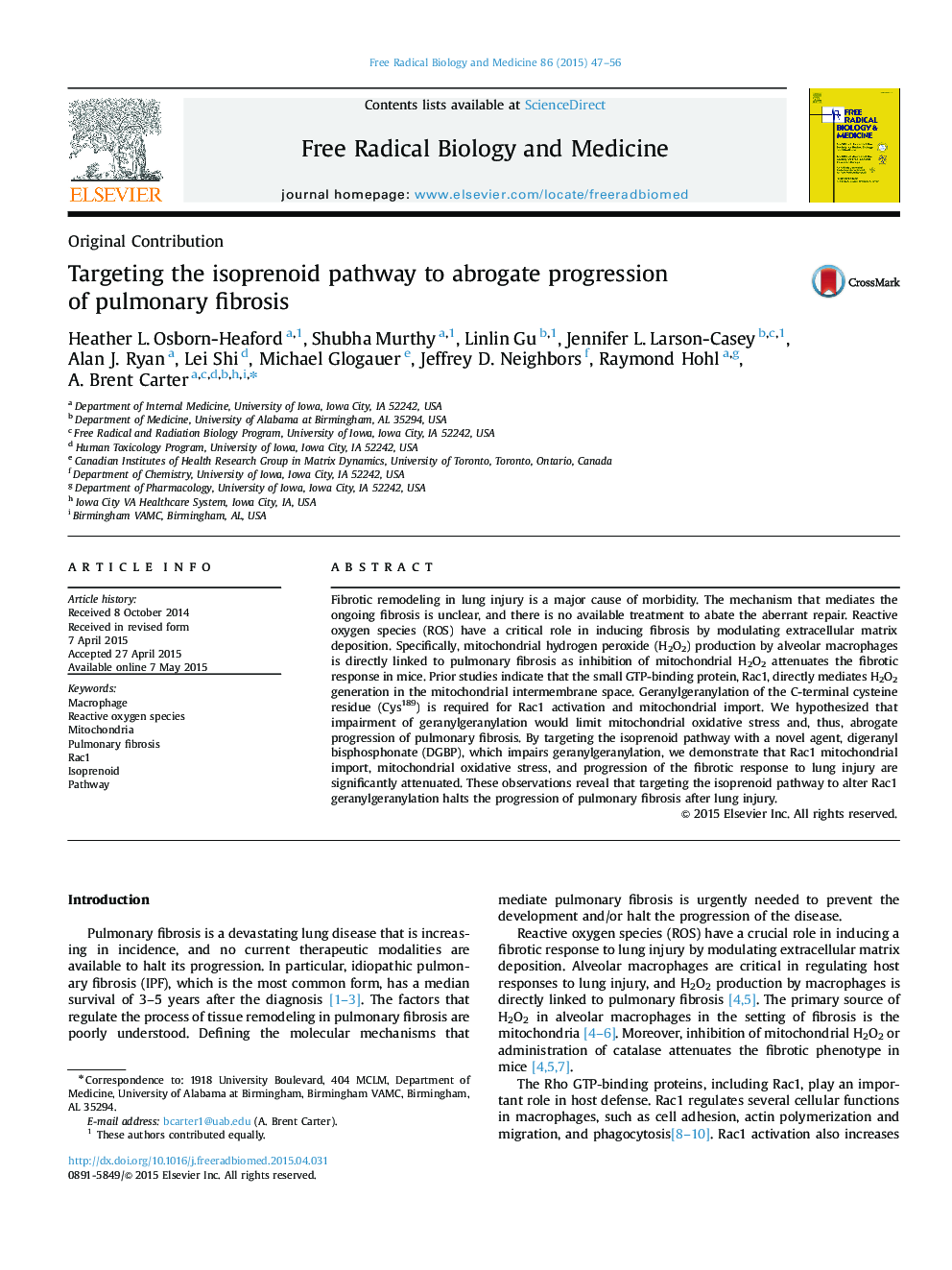| کد مقاله | کد نشریه | سال انتشار | مقاله انگلیسی | نسخه تمام متن |
|---|---|---|---|---|
| 8268916 | 1534956 | 2015 | 10 صفحه PDF | دانلود رایگان |
عنوان انگلیسی مقاله ISI
Targeting the isoprenoid pathway to abrogate progression of pulmonary fibrosis
ترجمه فارسی عنوان
هدف قرار دادن مسیر ایزوپرونگید برای از بین بردن پیشرفت فیبروز ریوی
دانلود مقاله + سفارش ترجمه
دانلود مقاله ISI انگلیسی
رایگان برای ایرانیان
کلمات کلیدی
موضوعات مرتبط
علوم زیستی و بیوفناوری
بیوشیمی، ژنتیک و زیست شناسی مولکولی
سالمندی
چکیده انگلیسی
Fibrotic remodeling in lung injury is a major cause of morbidity. The mechanism that mediates the ongoing fibrosis is unclear, and there is no available treatment to abate the aberrant repair. Reactive oxygen species (ROS) have a critical role in inducing fibrosis by modulating extracellular matrix deposition. Specifically, mitochondrial hydrogen peroxide (H2O2) production by alveolar macrophages is directly linked to pulmonary fibrosis as inhibition of mitochondrial H2O2 attenuates the fibrotic response in mice. Prior studies indicate that the small GTP-binding protein, Rac1, directly mediates H2O2 generation in the mitochondrial intermembrane space. Geranylgeranylation of the C-terminal cysteine residue (Cys189) is required for Rac1 activation and mitochondrial import. We hypothesized that impairment of geranylgeranylation would limit mitochondrial oxidative stress and, thus, abrogate progression of pulmonary fibrosis. By targeting the isoprenoid pathway with a novel agent, digeranyl bisphosphonate (DGBP), which impairs geranylgeranylation, we demonstrate that Rac1 mitochondrial import, mitochondrial oxidative stress, and progression of the fibrotic response to lung injury are significantly attenuated. These observations reveal that targeting the isoprenoid pathway to alter Rac1 geranylgeranylation halts the progression of pulmonary fibrosis after lung injury.
ناشر
Database: Elsevier - ScienceDirect (ساینس دایرکت)
Journal: Free Radical Biology and Medicine - Volume 86, September 2015, Pages 47-56
Journal: Free Radical Biology and Medicine - Volume 86, September 2015, Pages 47-56
نویسندگان
Heather L. Osborn-Heaford, Shubha Murthy, Linlin Gu, Jennifer L. Larson-Casey, Alan J. Ryan, Lei Shi, Michael Glogauer, Jeffrey D. Neighbors, Raymond Hohl, A. Brent Carter,
